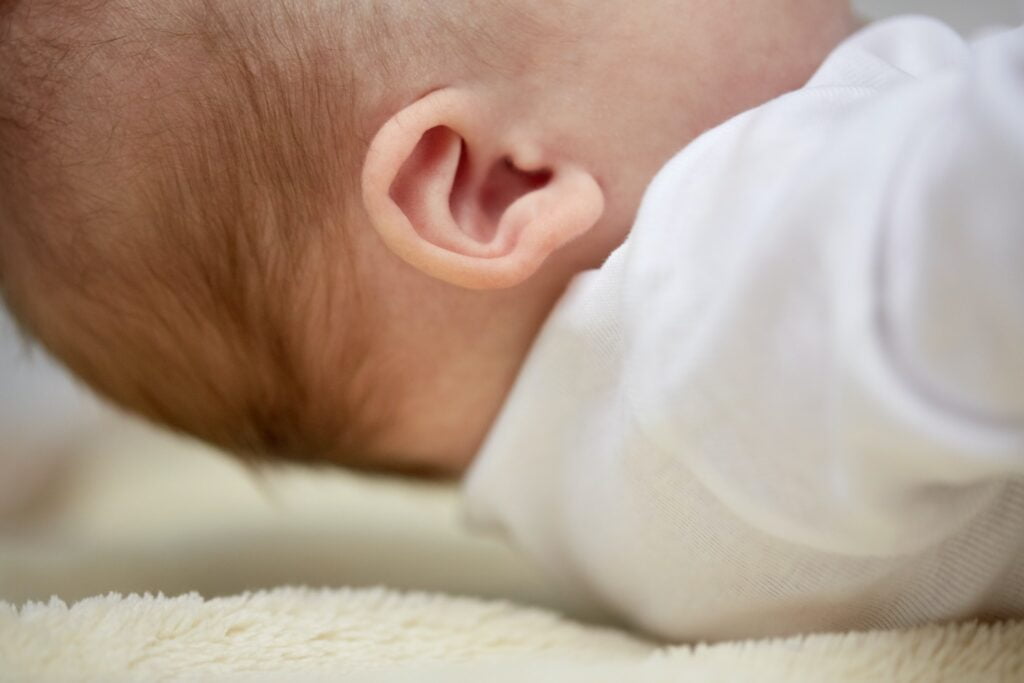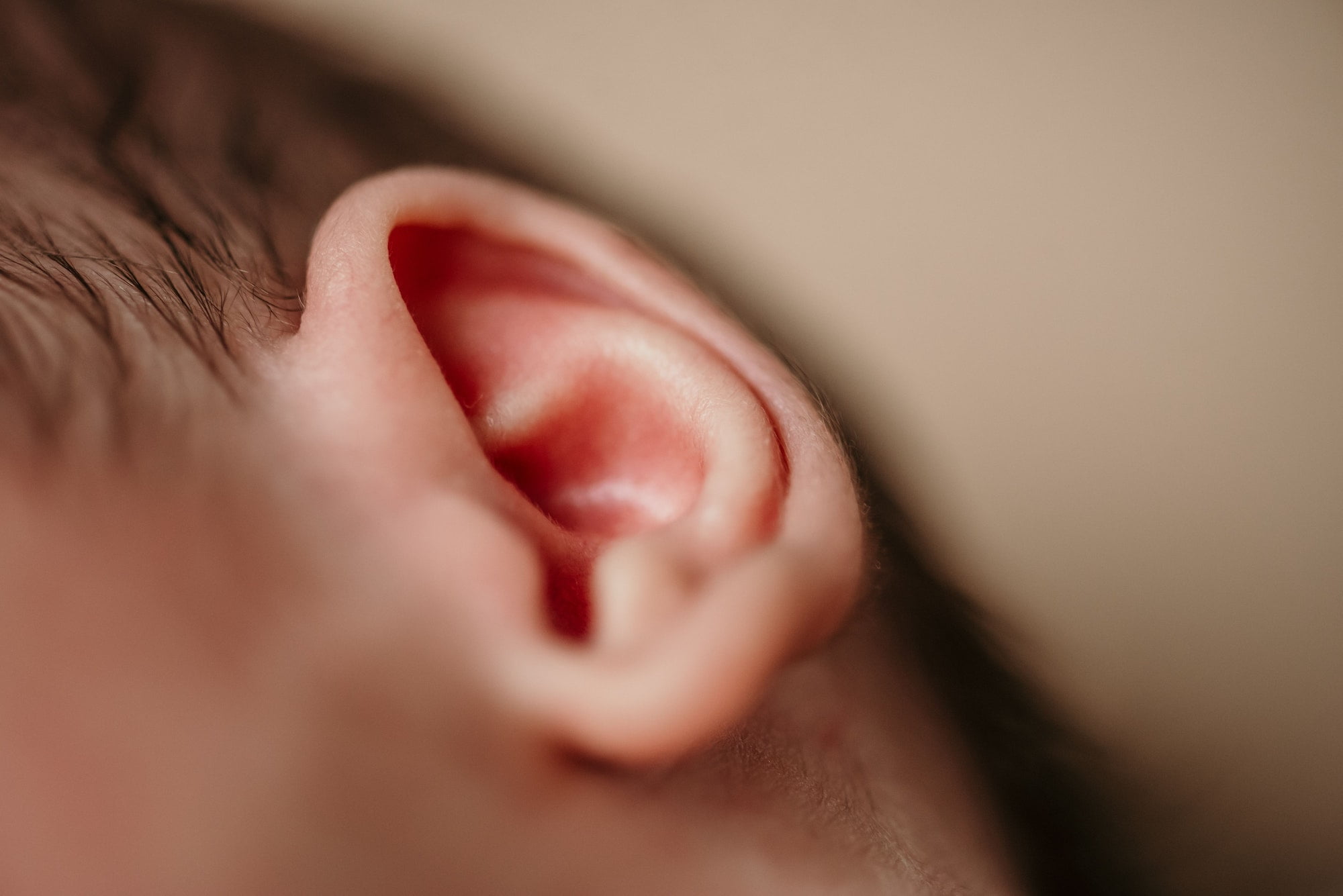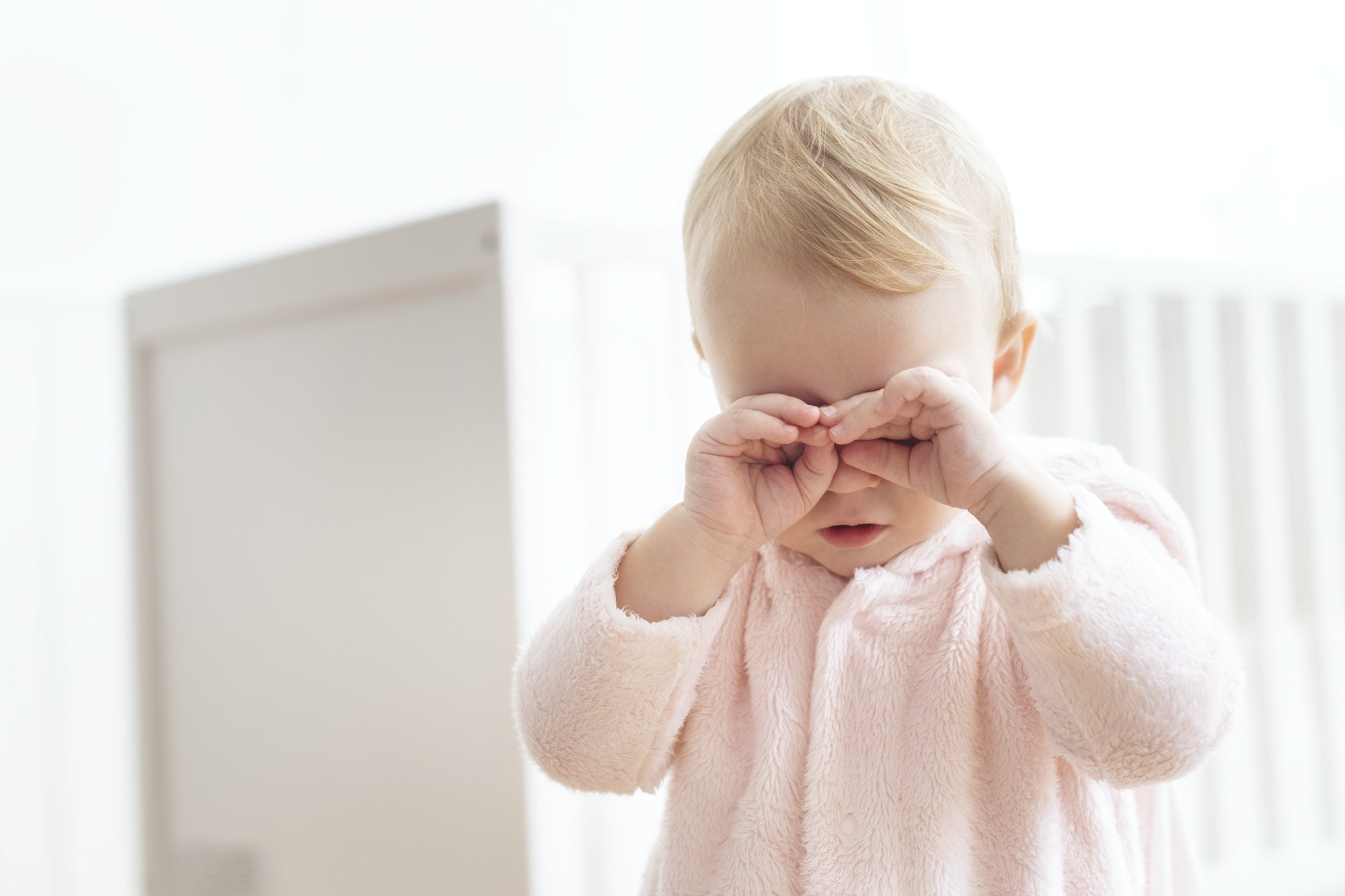Table of Contents
ToggleWelcome, proud new parent! Have you ever pondered during those late-night feedings if your baby’s ear color could predict their future skin tone? It might sound unusual, but there’s considerable discussion about whether those tiny ears can hint at your baby’s eventual complexion. This topic has intrigued many!
But do these delicate ears genuinely offer a clue, or is it just another myth among countless baby tales? As we delve into this fascinating subject, remember that every skin shade is beautiful. First, let’s uncover the mystery behind why newborn skin color is so unpredictable.
Understanding Newborn Skin Color: The First Glimpse
Have you ever wondered why your newborn’s skin color looks different than expected? Many new parents notice this, and it’s all about science. At birth, babies often have a bluish or purplish hue because they haven’t fully started breathing air yet. Once they do, their skin color begins to change as oxygen circulates.

Bilirubin, a natural substance in the blood, can cause a yellowish tint if levels are high, resulting in jaundice. Melanin, the pigment responsible for skin, hair, and eye color, is still developing, which means a newborn’s skin color can take weeks or months to settle.
Hormonal changes can also lead to temporary skin conditions, such as tiny white bumps or rashes. So, while your baby’s skin color evolves, it’s all a part of their natural development process. Now, let’s explore if ear color can predict their skin tone.
Exploring the Ear Color Theory: Do They Predict Skin Tone?
Now, if you’re like many new parents out there, you might’ve heard the age-old chatter around the water cooler or at family barbecues: “Want to know your baby’s future skin color? Just look at their ears!” Sounds wild, right? But before you write it off as just another old wives’ tale, let’s give it a genuine, good-hearted look-see.
The Ear Tip Test for Skin Color: Myth or Reality?
Alright, folks. Buckle up because we’re diving straight into the hype surrounding the “ear tip test for skin color”. Ever since Grandma June mentioned it at the baby shower, you’ve probably been side-eyeing those tiny lobes wondering, “Is there any truth to this?”
Turns out, this belief has its roots in the idea that the skin at the tip of a baby’s ear is thick enough to give a sneak peek into the melanin’s true colors, which is essentially the pigment determining our skin’s hue. But, real talk? Many pediatricians and skin experts would raise an eyebrow at this. There isn’t a plethora of scientific research backing up the ear tip theory. More often than not, it’s based on observations and, let’s be honest, a sprinkle of wishful thinking.
However, it’s worth noting that while the ear’s color might show some hint towards future skin color, it isn’t a foolproof indicator. A lot factors into the mix – genes from both parents, ancestral background, and some good ol’ genetic roulette.
Alright, taking a step back. Yes, those cute baby ears are captivating and, yes, they might hold some truths (or myths) about your baby’s skin journey. But before we hitch our wagons to one theory, let’s continue to peel back the layers of this colorful mystery. Curious about how long it really takes for your kiddo to sport their forever shade? Well, let’s move on and unpack that next.
This section delves into the main keyword topic, offering a blend of informal language, emotive engagement, and insights. It naturally segues into the upcoming topic while maintaining the intended tone and energy.
When Do Babies Get Their Permanent Skin Color?
There’s a kind of magic in watching your baby grow. Those first smiles, the chubby-cheeked giggles, and, yep, even those baffling midnight cries. But amongst all these “firsts”, have you ever wondered, “When is my little one going to sport that forever shade of theirs?” It’s not just about the cute baby pics; it’s a genuine, “Gee, I wonder…” moment for many parents.
Babies are born with a natural hue that’s influenced by multiple factors like hereditary genes, birth circumstances, and oxygen levels. But that shade isn’t set in stone right away. The “when do babies get their permanent skin color” query is pretty popular in parenting circles. Here’s the lowdown: It usually takes about 6 months to a year for babies to settle into their more permanent skin tone. But for some, it might even be their toddler years before that final shade shines through. Wild, right?
Now, that’s not to say there won’t be changes as they grow. Sun exposure, health, and hormones can all play a part in slight skin tone tweaks. But that foundational shade? You’ll be seeing it in all those school photos before you know it.
Ready to dive deeper into this colorful journey? Let’s move on and uncover why some bubs might be rockin’ ears that are darker than their faces.
Why Are Some Newborns’ Ears Darker Than Their Faces?
So, let’s get real for a sec: Have you ever peeked at a newborn and thought, “Dang, those ears are rocking a different vibe!”? You ain’t alone, partner. A lot of fresh parents have been thrown for a loop, wondering about the “newborn ears darker” mystery. And, shoot, some folks even whip out the ol’ “newborn ears are dark” Google search after a baby visit.
The science behind it? It’s like Mother Nature’s sneak peek! The coloration of a newborn’s ears can often be influenced by melanin, the pigment responsible for skin, hair, and eye color. Right after birth, some areas of a baby’s body might have more active melanin than others, which could make those ears seem like they’ve got a lil’ extra sass! But this isn’t the final curtain call on their skin tone. As we chatted about earlier, that’s a slow-burn reveal.
It’s these little quirks and wonders that make the journey of parenthood so doggone interesting, ain’t it? From ears to toes, every bit of our kiddos keeps us guessing and marveling.
Now, speaking of marvels and myths, let’s move on and break down the big talk about predicting baby’s skin color and what’s legit versus what’s just old wives’ tales.
Predicting Baby’s Skin Color: Myths vs. Reality
Hey there, all you curious cats and kittens! Ever been at a family shindig and heard Aunt Patty swear up and down that she can predict little junior’s final skin tone by looking at his earlobes or the bottom of his feet? Yeah, we’ve all got that one relative, right? And with so many “baby skin color predictors” floating around in family lore, it’s hard not to wonder, “What skin color will my baby be, for real?”

First off, let’s be real: genetics are wild. They’re like nature’s lottery, blending mom’s and pop’s genes in ways that can throw us some curveballs. So while Aunt Patty might think she’s the next Nostradamus, it ain’t that straightforward.
Myth: “Look at the baby’s earlobes, and you’ll know their true shade.”
Reality: As we’ve gabbed about, ear color can change over the first year, so it’s not a definite tell.
Myth: “The skin color of the baby’s birth is their forever hue.”
Reality: Nah, not really. A newborn’s complexion can shift and settle over months, even years.
Myth: “Parents with similar skin tones will have babies with the exact same shade.”
Reality: Hold your horses! Genetics are complex, and it’s a mix from both sides. So, surprises can pop up!
Science tells us that several genes play the dance to decide a baby’s skin color. But pinpointing the exact shade? That’s like trying to predict next week’s weather by looking at a frog’s knees (yeah, that’s an old myth too).
Ready to keep this enlightening journey rollin’? Let’s move on to how you can champion your little one’s radiant skin health. Because, truth be told, every hue is beautiful!
Caring for Your Baby’s Skin: Tips for Healthy Skin
Alright, all you new mommas and poppas out there, let’s rap about something straight-up crucial: your baby’s skin. Forget those color predictions and let’s dish on what really matters – making sure that soft, squishy skin stays as radiant and healthy as possible.
Hydrate, Hydrate, Hydrate! Keep your baby’s skin moisturized. Ain’t nothing like a good ol’ hypoallergenic baby lotion to do the trick.
Avoid Harsh Chemicals: Look out for natural, gentle cleansers. That baby-soft skin can be sensitive, so no need for any of those gnarly additives.
Sun Protection: Yep, even for the little ones! But stick to shady spots and protective clothing rather than slathering on the sunscreen for infants under six months.
Stay Vigilant: Keep an eye out for skin changes and rashes. When in doubt, holler at your pediatrician.
Remember, it’s not about changing that precious skin tone – it’s about cherishing and nurturing it. After all, every shade is its own kind of gorgeous. Ready to dive deeper into this color-coordinated conundrum? Well, then, let’s move on and unravel some of those burning mysteries y’all have been itching to ask!
FAQs: Unraveling the Mysteries of Newborn Skin Color
Alrighty, folks, let’s get down to the nitty-gritty. You’ve got questions, and by golly, we’ve got answers! Let’s tackle some of the big ones.
Why Do Babies Change Colors?
Well, ain’t that the million-dollar question? Newborns can look a little blue-ish right after birth due to circulation. As they breathe and get more oxygen, that hue shifts. Over time, factors like genetics, blood circulation, and oxygenation come into play.
Is the Ear Tip Test Accurate?
While it’s an old wives’ tale many swear by, there ain’t concrete scientific proof backing it up. Remember, skin tone evolves with age, so using ear tips as a definitive guide? Eh, maybe not the best move.
When Do Babies Settle Into Their True Skin Tone?
Generally, it can take anywhere from several months to a year. But just like all of us, a baby’s skin tone might change with sun exposure and other factors as they grow up.
Man, unraveling these mysteries feels good, right? But wait, there’s more. Let’s move on to wrap up all this juicy info and put a neat bow on it.
Conclusion: Summarizing the Key Points
Well, y’all, it’s been quite the ride, hasn’t it? We dived deep into the age-old chatter ’bout Can Newborn Ear Color Determine Skin Color. While we’ve debunked some tales and found a smidge of truth in others, here’s a zinger for ya: Did you know that the iris of a baby’s eye, just like skin, can take months to settle into its permanent shade? Makes you think, huh? It’s a wild world of baby mysteries out there, and we’re just scratching the surface. Remember, every baby is unique and they all blossom in their own time. Until next time, keep those diapers handy and stay curious, folks!
Related Articles:









